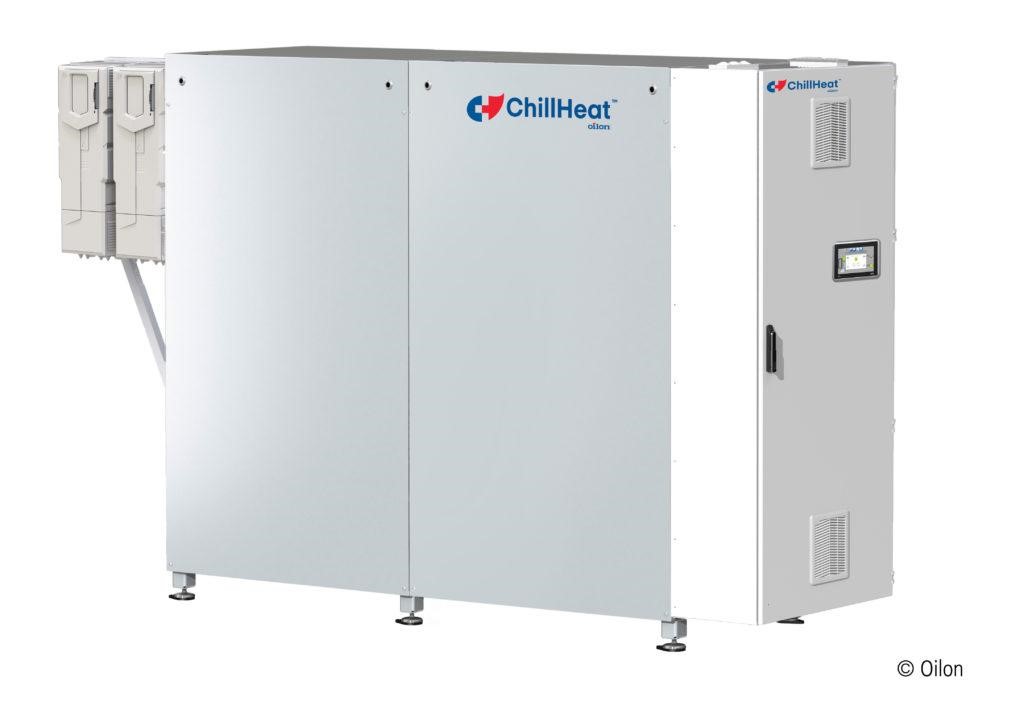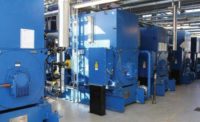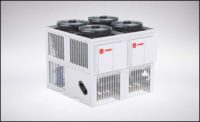Combined heating and cooling (CHC) refers to a heat pump system intended for simultaneous production of heating and cooling. In the municipality of Lempäälä, Finland, the solution will include a district loop booster unit for utilizing thermal energy in the local heating plant’s return pipe.
“Lempäälä will be the first location where these connections are integrated under one and the same system,” said Jussi Alpua, chief business officer for industrial heat pumps and chillers, Oilon.
In district heating systems, return water temperature is usually around 40°-50°C. The combination of a CHC heat pump and a district loop booster can be used to recover 10° of the heat. The system is electrically powered.
“By using a district loop booster, we can feed this energy back into the district heating loop,” said Toni Laakso, executive director, Lempäälän Lämpö. “This lowers the return water temperature to around 30°. This will improve the energy efficiency of biofuel-firing heating plants.”
“What this means in practice is that we produce district heating with electricity. However, we will use only renewable energy for the purpose. We are connected to the Nordic electricity markets, and whenever there is cheap renewable energy available, we will utilize this in our heat pumps,” Laakso continued.
According to Laakso, the solution will also serve the local district cooling network.
“Many cooling consumers require cooling only during the summer; at other times, the system would remain idle,” he said. “With this combined CHC and booster solution, we can increase the system’s operational time. Furthermore, we will no longer need to dump the energy extracted by the cooling process into the atmosphere.”
Getting More Out of the District Heating Network
“This kind of heat pump solution, one where different systems can be joined together, increases the overall efficiency of district heating production,” Laakso said. “The benefits of this system become more evident when new production units are added to the network. As an example, we could utilize heat from different companies’ production processes. Automation plays a big role as well, having more extensive data creates more opportunities.”
What Laakso means by this is that the more the company knows about when and how much consumers require heating and cooling, the more accurately it can adjust its production. District heating consumers, in turn, benefit from more transparent pricing.
“Of course, this is a two-way street: When cheap electricity is available, we could offer district heating or cooling for the consumers,” he said. “The development of power transmission tariffs is a major factor in this.”

Driving the Energy Revolution
If implemented at a larger scale, a similar combination of CHC heat pumps and district loop boosters could serve the entire power system. Cross-sector integration within the energy industry is a big part of the ongoing energy revolution.
“A district heating system is home to significant, highly controlled thermal energy streams, typically within densely populated areas,” said Laakso. “In the future, the power distribution system will be subject to frequent peaks and valleys, which the district heating network will be able to even out within a 24-hour timeframe. The district heating network could serve as an energy store for the power distribution system — just like electric batteries, for example. For this to be possible, the different energy systems need to be able to communicate seamlessly.”
Furthermore, Lahti believes that both the exchange of energy and the exchange economy act as drivers for the current energy revolution.
“Being able to bring new technologies together under centralized systems will allow the energy system to be restructured at a more rapid pace,” Lahti said. “This is one of the things we want to influence; when considering property- or building-specific heating options, we would like to be there discussing the options. In our opinion, the benefits of these kinds of centralized systems should be taken into account.”
Unifying fragmented responsibility for better compliance
One of the benefits of a centralized district heating system is that a single entity — in this case, the system operator or heating company — will be responsible for minimizing the environmental impact of energy production.
“A centralized solution with a high utilization rate will allow the company to better assess which refrigerants to use. “The EU has stipulated certain environmental sustainability goals and requirements for the refrigerants used in heat pumps,” Alpua said.
Refrigerants are categorized by global warming potential (GWP) value, which indicates the refrigerant’s impact on global warming compared to carbon dioxide (CO2) emissions. Refrigerant technology is developing at a rapid pace, and a centralized system provides significantly better potential benefits in combating climate change.
“When the entire system is under the power company’s control, matters of responsibility and compliance can be monitored more effectively,” Alpua said. “With higher volumes, it is easier to monitor and report objectives.”
According to Laakso, heat pumps are one of the best tools for improving energy efficiency.
“Since we already have a thermal energy stream reaching a temperature of 30°-50°, why not prime this stream and reuse it in the system. The technology is already there.”




